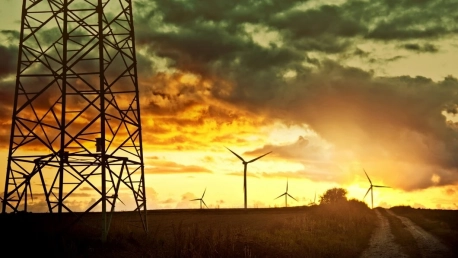The United States power grid, an engineering marvel that has illuminated and powered our nation for decades, faces urgent challenges. The once resilient infrastructure now buckles under the pressure of intensifying wildfires, hurricanes, and heatwaves, signaling a need for swift and decisive action. With each natural disaster, it becomes glaringly clear that our electrical system is not only the largest and most complex machine ever built but also aging and vulnerable. As climate change fans the flames of these environmental calamities, the grid stands on the front line, necessitating a deep dive into its intricacies, the urgency of implementing protective measures, and the imperative for substantial upgrades to ensure the safety and reliability of power supply both now and in the future.
The U.S. Power Grid: An Aging Colossus
The colossal U.S. power grid reaches every corner of the nation, an intricate tapestry of technology binding together countless communities. Yet, despite its grandeur, the grid is succumbing to age and environmental pressure. In particular, the grid’s role in igniting wildfires has thrust its vulnerabilities into the spotlight. Power lines sagging into dry brush or equipment sparking a flame have led to some of the most devastating fires in recent history. Understanding the grid’s aging infrastructure is crucial, not only for mitigating such disasters but also for framing the conversation around much-needed modernization.
Proactive Measures: Public Safety Power Shutoffs
Public Safety Power Shutoffs (PSPS) serve as a crucial fire-prevention measure, a deliberate darkening of the skies to keep communities safe from the threat of wildfire ignitions. California’s reliance on PSPS, in response to its wildfire crises, has set a precedent, but these are not mere switches turned off at a moment’s notice. The grid, a delicate dance of generation meeting consumption, demands precision in its operations.
Geographical Inequalities and Operational Challenges
The implementation of PSPS events is fraught with operational challenges and geographical inequalities that reflect the power grid’s complexity and uneven distribution of technological advancements. When the lights go out, the experience can be drastically different from one neighborhood to the next, pointing to insufficient control mechanisms and a dearth of sensors in low-voltage areas.
Regulation and Protocols: Learning from California’s Experience
California, having borne the brunt of wildfire-induced power outages, has implemented a regulatory framework mandating comprehensive communication protocols and post-blackout reporting by utilities. This proactive regulatory approach stands as a blueprint for other regions now facing similar threats. Formalized PSPS protocols ensure utilities are held accountable and that customer notifications and the provision of detailed reports after events are mandatory.
Ensuring Vulnerable Populations’ Safety
Power outages can be more than an inconvenience—they can be life-threatening for individuals with medical conditions reliant on electricity. Utilities must thus prioritize proactive communication, working to inform and prepare all customers, but especially the most vulnerable, for potential power shutoffs.
Toward a Smarter and More Transparent Grid
Investing in a smarter and more resilient power grid is essential in countering the inevitable challenges posed by climate change. Enhanced grid technologies, improved risk models, and transparent communication strategies stand at the forefront of this initiative. The road to a smarter grid is laden with financial and technological hurdles, but the benefits justify the journey.









